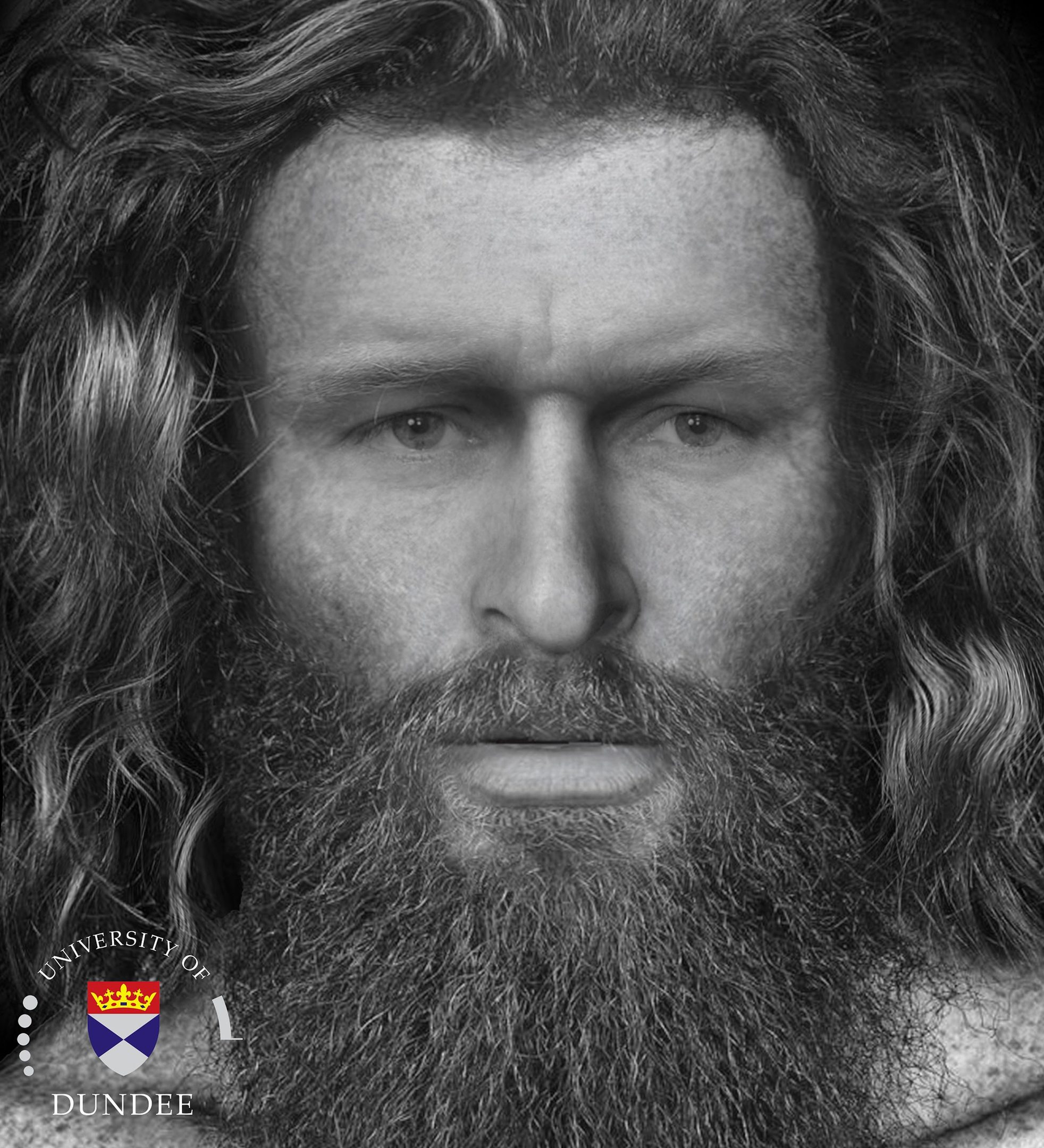
SCIENTISTS have reconstructed the face of a man who was brutally murdered 1,400 years ago.
Researchers from the University of Dundee’s Centre for Anatomy and Human Identification (CAHID) have recreated the face of a Pictish man after finding his skeleton at the entrance to a cave in the Highlands.
Archaeologists excavating the hideaway in the Black Isle were astonished to find the skeleton of a man buried in a cave recess.
His body had been placed in an unusual cross-legged position, with large stones holding down his legs and arms.
The bones were sent to CAHID’s forensic anthropologist Professor Dame Sue Black, whose team – Dr Christopher Rynn and PhD students Micol Zuppello, Viviane Lira and Samantha Goodchild – detailed his horrific injuries.
Prof Black said: “As you can see from the facial reconstruction, he was a striking young man but he met a very brutal end, suffering a minimum of five severe injuries to his head.
“The first impact was by a circular cross-section implement that broke his teeth on the right side.
“The second may have been the same implement, used like a fighting stick, which broke his jaw on the left.
“The third resulted in fracturing to the back of his head as he fell from the blow to his jaw with a tremendous force, possibly onto a hard object, perhaps stone.
“The fourth impact was intended to end his life as probably the same weapon was driven through his skull from one side and out the other as he lay on the ground.
“The fifth was not in keeping with the injuries caused in the other four where a hole, larger than that caused by the previous weapon, was made in the top of the skull.”
A bone sample sent for radiocarbon dating indicates he died some time between 430 and 630 AD during the Pictish period.
The skeleton was discovered when volunteers were trying to find out when the cave was occupied.
They found evidence the cave had been used for iron-smithing during the Pictish period.
Called the Rosemarkie caves project, it aims to investigate the archaeology of caves in the Black Isle extending for several miles along the coast.
Excavation leader Steven Birch said: “Having specialised in prehistoric cave archaeology in Scotland for some years now, I am fascinated with the results.
“Here, we have a man who has been brutally killed, but who has been laid to rest in the cave with some consideration – placed on his back, within a dark alcove, and weighed down by beach stones.
“Perhaps his murder was the result of interpersonal conflict; or was there a sacrificial element relating to his death?”

Enjoy the convenience of having The Sunday Post delivered as a digital ePaper straight to your smartphone, tablet or computer.
Subscribe for only £5.49 a month and enjoy all the benefits of the printed paper as a digital replica.
Subscribe